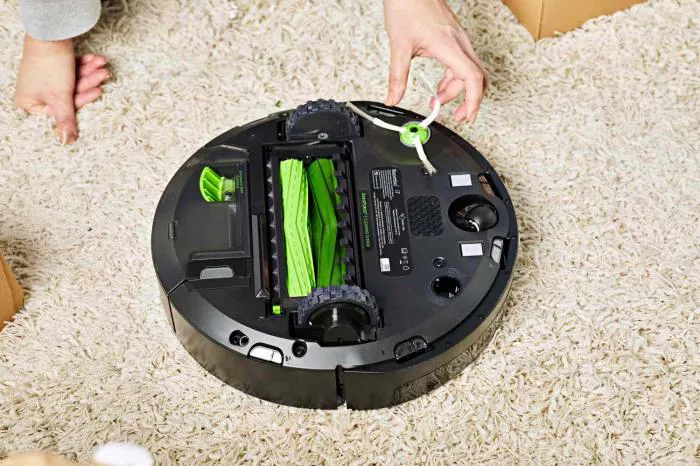The robot vacuum industry is constantly evolving, with new technologies emerging to enhance their cleaning capabilities. After spending a week in Las Vegas exploring the latest developments, here’s an overview of the new tech that could help keep your floors spotless.
Object Pickup
One area of innovation is the ability of robot vacuums to pick up objects. Some models are now capable of handling items weighing up to 500 grams, such as a men’s size 42/9 sneaker. However, only Roborock has actually demonstrated its robot picking up an object, which was just a sock.
Dreame’s robotic arm looks more robust, being bigger, thicker, and having a fatter pincer claw. Although I didn’t get to test it, the Saros Z70’s arm felt surprisingly strong considering its slim design.
Dreame’s arm also has attachments, which Roborock currently lacks. Dreame showcased a small toolbox with two brushes – a sponge for wet messes and a bristle brush. The concept is that the robot can attach these to its arms to reach nooks and crannies. But again, this remains a concept as I didn’t see it in action.
Both companies claim to have software that allows you to designate where items get placed. Roborock says you can specify an area for the bot to put cleaned – up items, while Dreame’s concept vac can put specific items in specific places like cat toys by the cat bed or shoes by the front door. However, neither company demoed their app, so it’s unclear how this functionality works in practice.
Reaching High Places
Adding a robotic arm to move items out of the way is an extension of the chassis lift technology seen in Roborock, Shark, and others. Dreame’s X50 Ultra can reach heights of up to 6 cm with this tech. But unfortunately, it’s not a precursor to climbing stairs as that would require a complete chassis redesign and is still several years away.
Mop – Swapping Station
Dreame (and its sub – brand Mova) introduced a mop – swapping station. This allows you to assign specific mop pads for different rooms. For example, the robot can go back to the station and swap its pads to use a fresh pair for the kitchen after cleaning the bathroom. This helps address concerns about cross – contamination. However, my initial thought is that a self – cleaning roller mop might be a simpler and more streamlined solution.
Navigation Innovations
Retractable Lidar Towers
Lidar has been the preferred navigation technology for most robot vacuums. But the tower on top can prevent them from getting under low furniture. The Dreame X50 Ultra, Roborock Saros 10, and Mova V50 Ultra are new bots that can lower their towers to access more areas. However, it remains to be seen how well they perform under the bed without the lidar tower, which requires further testing.
Enhanced Navigation with Additional Sensors and AI
Lidar is also being augmented by more sensors and AI. The goal is to create a robot vacuum that can seamlessly navigate your home, taking into account obstacles like unruly rug tassels in the living room, without you having to create keep – out zones in the app.
In conclusion, the robot vacuum industry is making significant strides in terms of functionality and navigation. While some features are still in the concept stage, others are already available and show great promise in making floor cleaning easier and more efficient. It will be exciting to see how these technologies develop further in the coming years.
Related topics:
- Vacuum Wars – Vacuum News and Reviews You Can Trust
- Vacuum Cleaner News – Vacuumtester
- The Latest Robot Vacuum News and Analysis | PCMag

